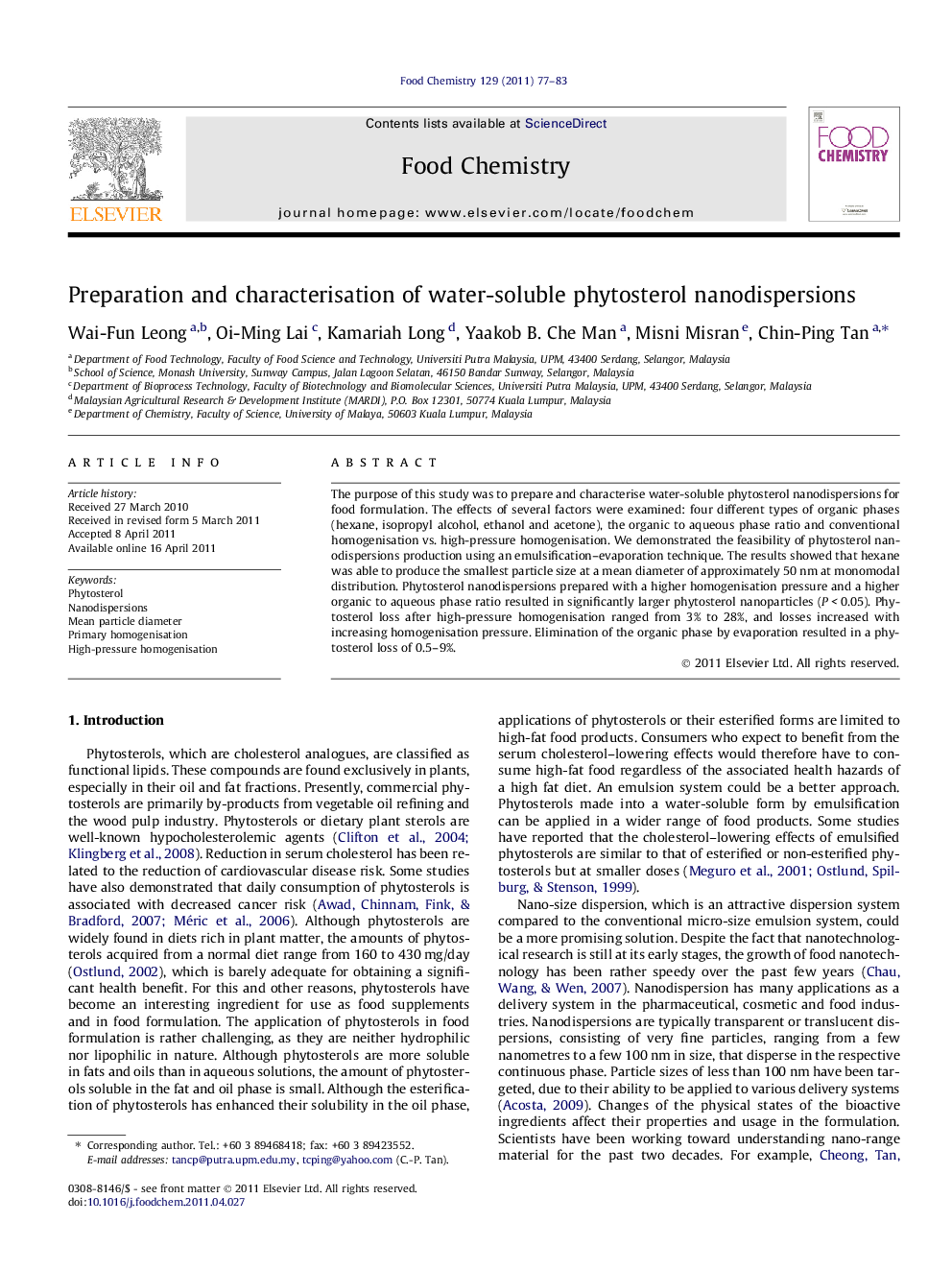| Article ID | Journal | Published Year | Pages | File Type |
|---|---|---|---|---|
| 1188494 | Food Chemistry | 2011 | 7 Pages |
The purpose of this study was to prepare and characterise water-soluble phytosterol nanodispersions for food formulation. The effects of several factors were examined: four different types of organic phases (hexane, isopropyl alcohol, ethanol and acetone), the organic to aqueous phase ratio and conventional homogenisation vs. high-pressure homogenisation. We demonstrated the feasibility of phytosterol nanodispersions production using an emulsification–evaporation technique. The results showed that hexane was able to produce the smallest particle size at a mean diameter of approximately 50 nm at monomodal distribution. Phytosterol nanodispersions prepared with a higher homogenisation pressure and a higher organic to aqueous phase ratio resulted in significantly larger phytosterol nanoparticles (P < 0.05). Phytosterol loss after high-pressure homogenisation ranged from 3% to 28%, and losses increased with increasing homogenisation pressure. Elimination of the organic phase by evaporation resulted in a phytosterol loss of 0.5–9%.
► We prepare and characterise the water-soluble phytosterol nanodispersions for food application. ► Development of a stable phytosterol nanodispersions formulation. ► The phytosterols particles produced do not contain oil as carrier.
